 Without question, a visit to Thailand makes an exceptional vacation. The ‘Land of Smiles’ offers a rich and ancient culture, enchanting architecture, and delicious food. There’s so much to discover from bustling Bangkok to beautiful beaches; however, one extraordinary experience in Thailand that no visitor should miss is a visit to an elephant camp.
Without question, a visit to Thailand makes an exceptional vacation. The ‘Land of Smiles’ offers a rich and ancient culture, enchanting architecture, and delicious food. There’s so much to discover from bustling Bangkok to beautiful beaches; however, one extraordinary experience in Thailand that no visitor should miss is a visit to an elephant camp.
There are many elephant camps in Thailand, most in the jungles of the north, so taking an excursion from Chiang Mai is the most common. Half-day and full-day tours include hotel pick up and round-trip transportation, or if a short visit isn’t enough, there are multi-day volunteer programs. Choosing the right elephant camp can seem overwhelming because every hotel offers a selection of elephant camps, tours are sold on the street, and every tuk-tuk driver has a recommendation for a different camp.
How Elephant Camp Tourism Began
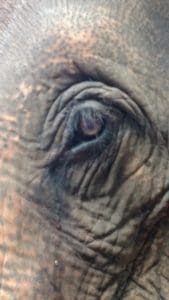 Until logging was banned in Thailand in 1989, majestic Asian elephants were conscripted into hard labor dragging and lifting huge logs. Tragically, the magnificent beasts were often subjected to “spirit breaking ceremonies” and cruel bullhooks to force them to respond to orders of their mahout (traditional caretaker). When the logging stopped, the elephants couldn’t be turned back out to the wild. An adult Asian elephant eats about 300 pounds of grasses, fruit, and bark every day, so the Thai government encouraged the development of elephant tourism to help cover the hefty costs of domesticated care and rehabilitation.
Until logging was banned in Thailand in 1989, majestic Asian elephants were conscripted into hard labor dragging and lifting huge logs. Tragically, the magnificent beasts were often subjected to “spirit breaking ceremonies” and cruel bullhooks to force them to respond to orders of their mahout (traditional caretaker). When the logging stopped, the elephants couldn’t be turned back out to the wild. An adult Asian elephant eats about 300 pounds of grasses, fruit, and bark every day, so the Thai government encouraged the development of elephant tourism to help cover the hefty costs of domesticated care and rehabilitation.
Choosing an Ethical Elephant Camp
Today, elephant camps undoubtedly provide a better life for the rescued animals; however, some camps are better than others. In order to draw tourists (and make money), many camps offer elephant rides, either bareback or in a frame seat on the elephant’s back. Although elephants are incredibly strong for lifting and moving logs, surprisingly, they don’t have very strong backs for carrying weight. Experts say they can support only about 300 pounds for four hours a day. The bamboo and even heavier metal seat frames hold two people and some camps have elephants carry passengers up to eight hours a day. This is just a different kind of servitude for the elephants and is not sustainable. Riding bareback as a single passenger is not as physically demanding, but the elephants still have to be trained to accept riders.
Some camps also have elephants perform shows where they paint pictures with their trunks and play soccer. This proves how intelligent these gentle giants are, but I don’t think anyone has ever caught an elephant painting or kicking a ball around in the wild. These unnatural behaviors must be taught, often by use of hooks and punishment.
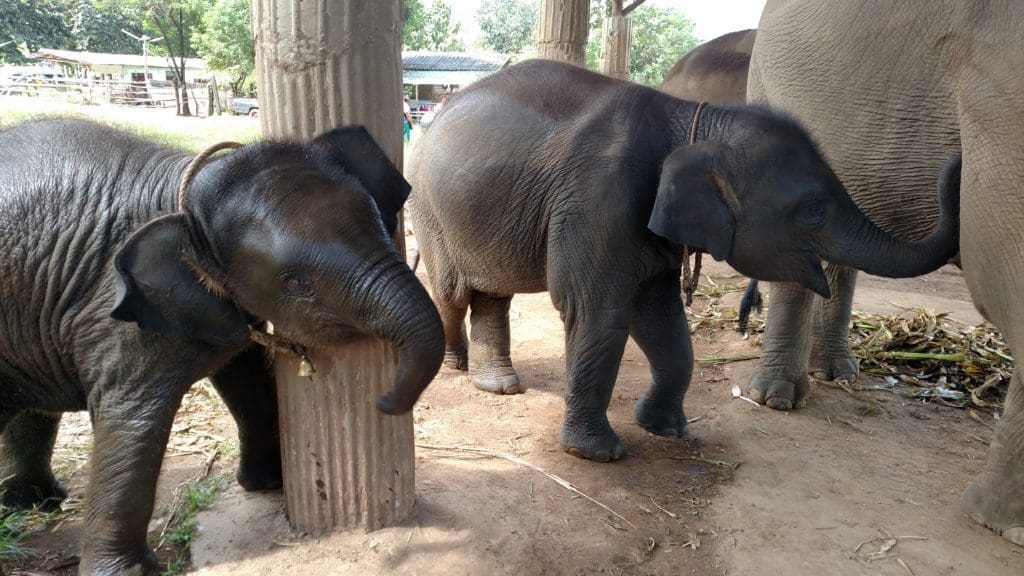
The most ethical elephant camps don’t offer riding or shows, but rather an opportunity to feed and play with them, and even bathe them in the river. In the best camps, mahouts spend up to 18 hours a day with their elephant charge. This allows them to truly bond and the elephant learns voice commands, rather than being forced by inflicting pain. Being a dedicated mahout is as much a lifestyle as it is a job.
We decided we didn’t want to go to a riding camp, even if it was bareback or optional. Although I’ll admit to being curious to see elephants paint, I really didn’t want to patronize a place that made elephants perform, either. After much research and study of the many elephant camp options, we chose a tour to Happy Elephant Home and it was one of the best days ever!
Our Day at Happy Elephant Home
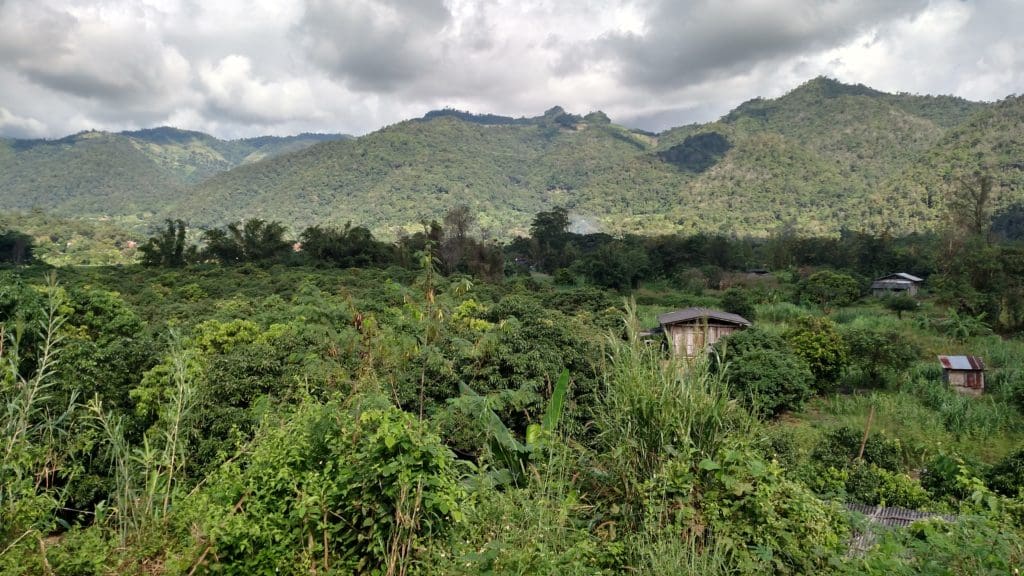 We were picked up at our Chiang Mai hotel in an air-conditioned van and rode about an hour to the camp up in the mountainous jungle. Happy Elephant is a small operation with five elephants in residence, including Milo, a mischievous 3-month-old already weighing in at more than 600 pounds!
We were picked up at our Chiang Mai hotel in an air-conditioned van and rode about an hour to the camp up in the mountainous jungle. Happy Elephant is a small operation with five elephants in residence, including Milo, a mischievous 3-month-old already weighing in at more than 600 pounds!
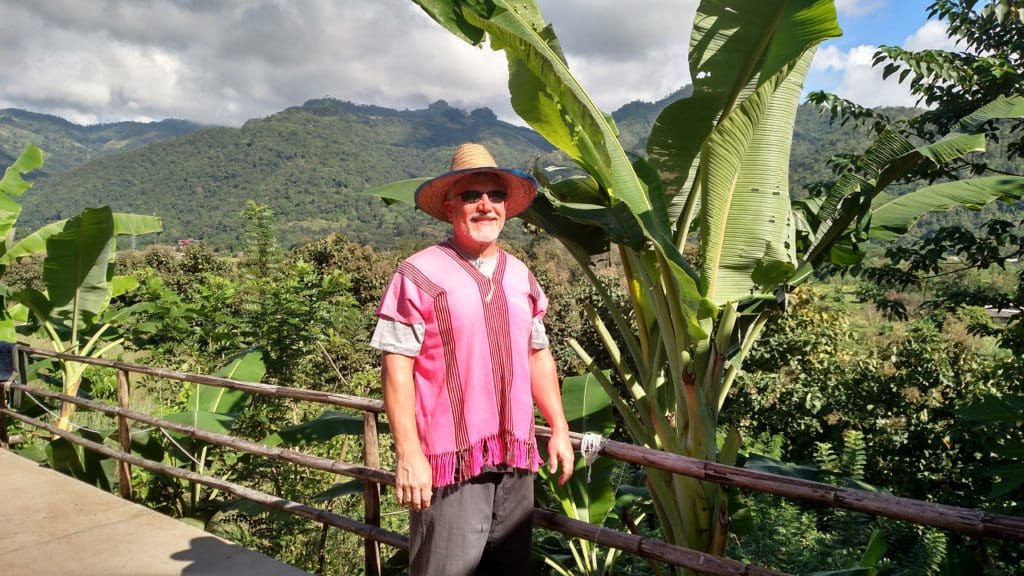
We donned mahout clothes because although elephants are color-blind, they can smell up to four kilometers downwind and are used to the scent of the clothing. Our guide shared some elephant facts and told us what we would be doing for the day. We learned how to wield a machete to cut sugar cane and pumpkins (it’s harder than it looks!), then stocked our feed bags. We fed Milo and his mama while they were in a corral because young Milo has a tendency to run and frolic when out in the open. He had a tinkling bell tied around his neck for just that reason. Gentle and slow, Grandma was hanging around nearby and we got to feed and interact with her, too.
Next, we trekked across a field to meet 6-month-old Mina and another mature female who had been rescued from a life of logging, only to be consigned to carrying a heavy passenger seat at another camp. She has lived a life of leisure at Happy Elephant for three or four years now, but still bears hairless hide in the exact shape of the seat that chaffed away her coarse hair. You can sdee this clearly in the video below. The sight of that confirmed that we made the right decision not to ride.
Our small group walked about a mile with Mina and the rescued older elephant down a steep and very muddy trail to the river. We fed them some more – remember, they eat 300 pounds a day – then they moseyed down the muddy bank into the water. We followed them right into the river and splashed them as they rolled and submerged, and we rubbed sand onto their tough hides. It was an amazing experience – how often do you get to bathe an elephant?
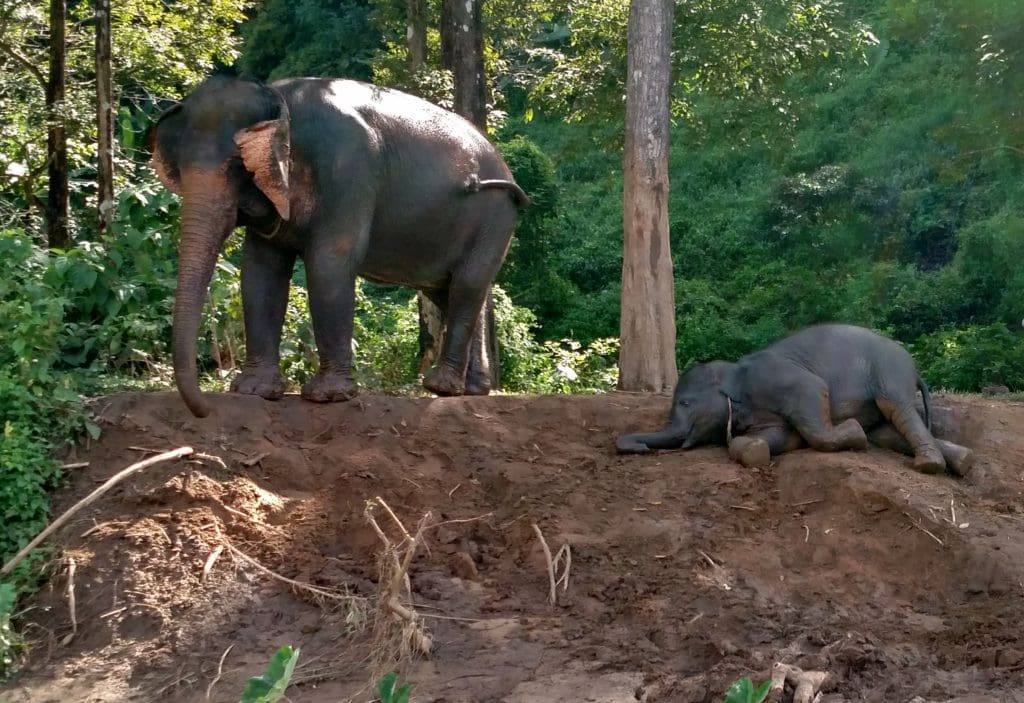 When we got out of the river, we sat on the mud flats and watched the elephants roll in the dirt on the bank. They threw dirt over their backs to protect their hides from sunburn and insects. On the walk back up to the camp’s buildings, our guide gave us a lesson on determining an elephant’s age and health status from the texture of their poo patties, which were plentiful along the trail.
When we got out of the river, we sat on the mud flats and watched the elephants roll in the dirt on the bank. They threw dirt over their backs to protect their hides from sunburn and insects. On the walk back up to the camp’s buildings, our guide gave us a lesson on determining an elephant’s age and health status from the texture of their poo patties, which were plentiful along the trail.
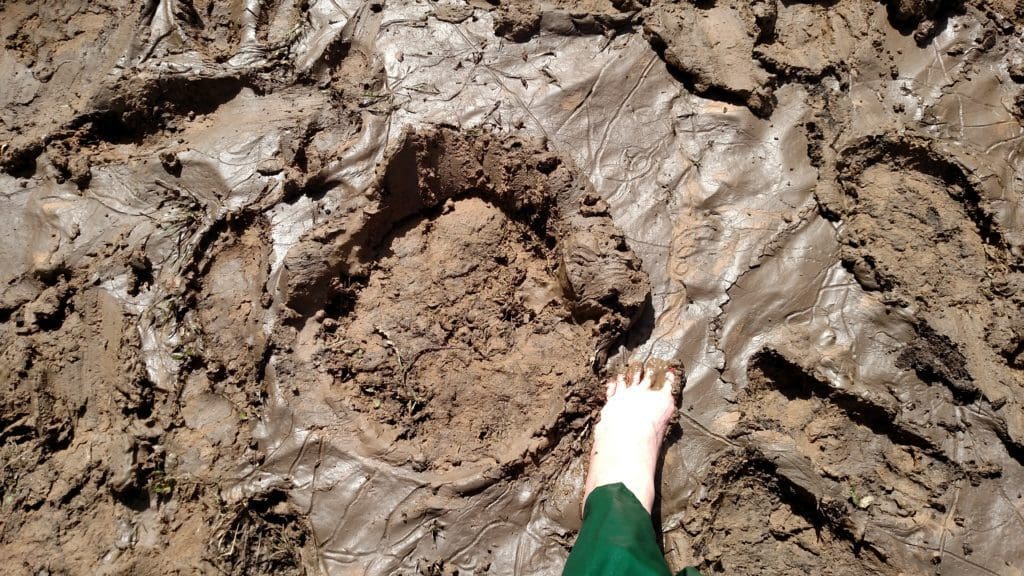
When we returned, Milo came out of his corral to play, bells tinkling. He climbed into a concrete water trough to spiritedly splash, tried to steal someone’s empty feed sack, and generally romped around in an adorable way. We changed out of our mahout clothes and washed off all the mud before we enjoyed a delicious and plentiful al fresco luncheon.
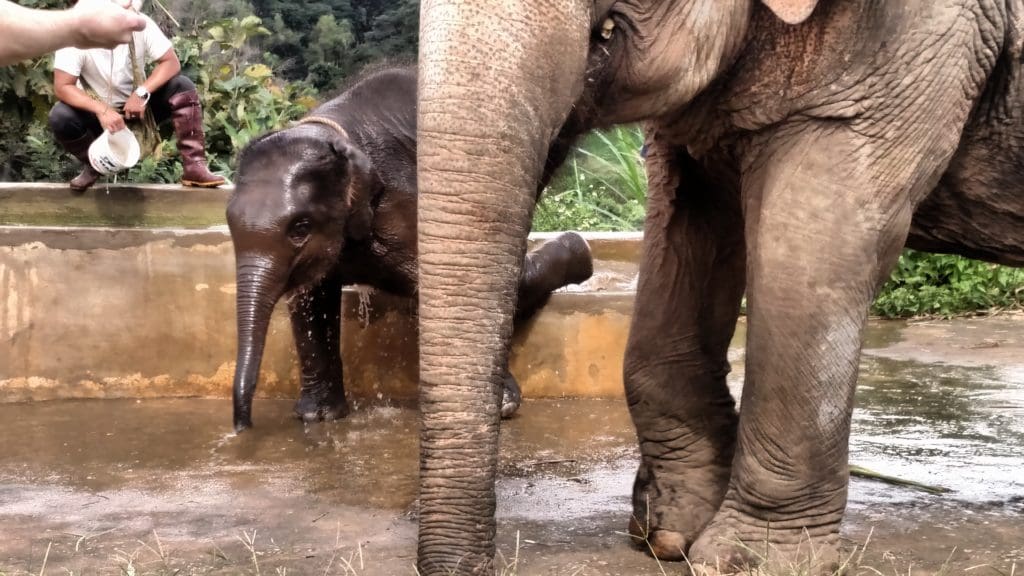
Happy Elephant Home is clearly dedicated to the well-being of the elephants who live there and educating tourists about these sensitive, intelligent pachyderms. I was very glad we chose Happy Elephant Home and am happy to recommend it to other visitors.
For help in choosing an elephant camp or planning your trip to Thailand in general, contact the expert vacation advisors at Covington Travel.







Wonderful story. I will try Happy Elephant Home next visit to Thailand.